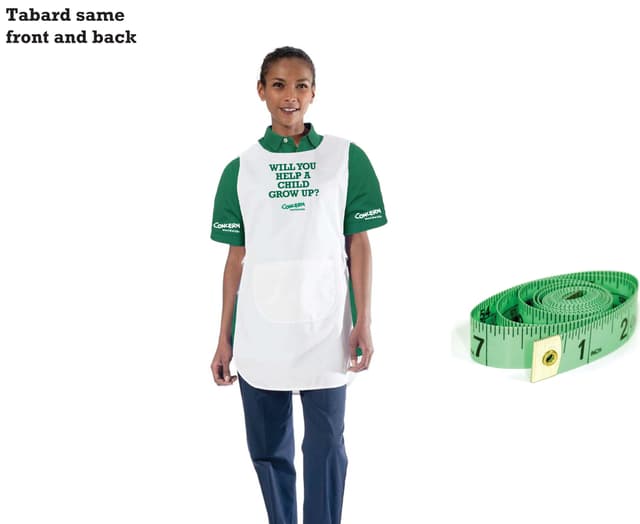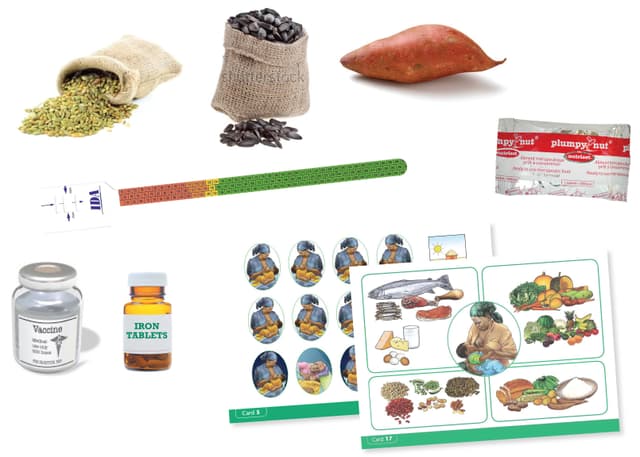Concern Worldwide Ireland’s direct dialogue fundraising campaign: ‘Help a child grow up’
- Exhibited by
- Jim Howe, Concern Worldwide, Ireland (via Craig Linton)
- Added
- May 06, 2015
- Medium of Communication
- Face-to-face fundraising
- Target Audience
- Type of Charity
- Poverty
- Country of Origin
- Republic of Ireland
- Date of first appearance
- 2014 onwards.
SOFII’s view
Face-to-face fundraising remains one of the best ways to recruit new donors to your cause. However, it is becoming increasingly hard to keep those donors and inspire them to become long-term supporters of your work.
This campaign from Concern Worldwide in Ireland and Open Fundraising was able to increase donor retention by carefully planning a consistent and inspiring series of communications in the first six months of giving.
Creator / originator
Concern and Open Fundraising
Summary / objectives
Concern created an integrated direct marketing campaign that used face-to-face recruitment, SMS, email, telemarketing and direct mail. The campaign mapped out the donor's experience from his or her initial contact with a fundraiser and throughout his or her first six months with Concern.
The key objectives for the campaign were:
1. To increase the recruitment of new donors to Concern.
2. To transfer the donor's relationship from the individual fundraiser to Concern.
3. Reduce non-starter rates: people who say they will take out a direct debit but don't actually make a first payment.
4. Reduce attrition rates.
The campaign was built around the core proposition of 'help a child grow up'. Concern's creative agency, Open Fundraising, helped them to create a new fundraising proposition and donor journey.
Background
Concern's regular giving programme has been reliant on street and doorstep fundraising since 1999. Although very successful this recruitment channel was facing challenges due to the saturation of the market. In addition, the number of failed first payments and attrition figures in the first year was increasing.
It was decided that a direct marketing plan was needed to look at these issues and to improve the quality of the conversation and communication with donors.
The street and door recruitment strategy was incorporated into an integrated marketing campaign. Concern decided to make all messaging for the first six months of the donor's relationship with them consistent.
The hours and days immediately after sign up are critical in forming a connection with Concern and the integrated direct marketing campaign ensured that the donor could be welcomed, thanked and made to feel appreciated.
Concern's research suggested that donors' post-recruitment experiences were often not as engaging or rewarding as his or her recruitment. This resulted in higher attrition and non-starter rates, which had been increasing year on year.
Special characteristics
The following journey was created for new donors to Concern:
1: Street and doorstep fundraisers are given in-depth training and a full suite of props and materials to help them introduce the 'help a child grow up' concept to potential donors they meet.
2: Within hours of signing up, the donor receives an automated, personalised SMS from the fundraiser they have just spoken to.
3: Two days after signing up, the donor receives a personalised email from the street and door fundraising manager in Concern.
4: From day five, Concern's in-house telemarketing team attempt a welcome call to say thank you, using personal details from the sign-up experience.
5: Within the first week, a welcome pack is sent out. This includes a welcome letter from the CEO, a tax form and a booklet detailing Concern's work, told through the stories of children who are already being helped.
6: During the first six months of giving, each donor receives an SMS or email each month after their regular donation is processed. These are positive updates about people who have been helped thanks to the support of donors.
Test details
Concern monitored the response and engagement of donors to the emails and SMS and saw better engagement and less opt-outs from emails. This has now been made the main channel for communication. Concern switched priority in 2015 and have had good results.
Costs
Not disclosed.
Results for the 12 months of 2014 showed that:
- 10,147 donors were recruited via street and door combined.
- 89 per cent of donors received a welcome call from the telemarketing team.
- Approximately 93 per cent of donors received a welcome pack.
- 49 per cent of donors received monthly updates via SMS.
- Approximately 40 per cent of donors received monthly updates via email, although priority was given to SMS donors received emails if they had not supplied a mobile number.
- 88 per cent received combined updates.
All of this activity resulted in the following results:
Non-Starter Rate
Prior to the welcome process, the average non-starter rate for 2013 was 16 per ncent. The average F2F non-starter rate has dropped to 4 per cent
Attrition rate
At the six-month point 75 per cent of the file is still active.
The following decreases in attrition were recorded:
| Month | Pre-campaign attrition (cumulative) | Post-campaign attrition (cumulative) |
| 1 | 18 per cent | 11 per cent |
| 2 | 20 per cent | 15 per cent |
| 3 | 22 per cent | 18 per cent |
| 6 | 30 per cent | 25 per cent |
Overall, the results show the 'help a child grow up' campaign was immediately effective. Attrition and non-starter rates decreased considerably and the number of new donors recruited by the fundraisers increased.
Based on the number of additional recruits each month and their average retention rate, Concern should break even on investment within 2.5 years. The return on investment over five years should be €3.70 for every €1 spent.





Also in Categories
-
















